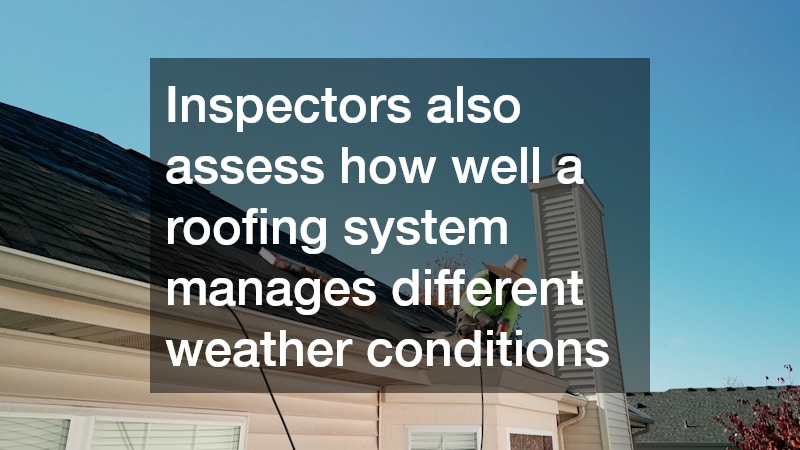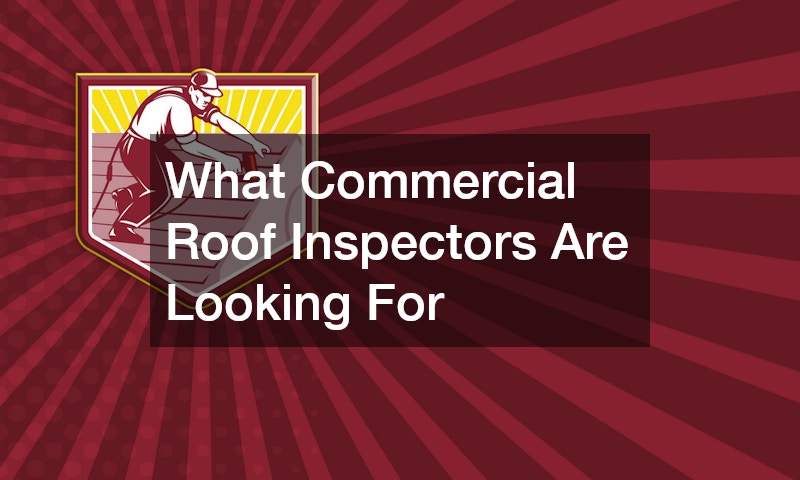In the world of commercial properties, maintaining a solid and reliable roof is paramount to the protection and preservation of the building. This is where commercial roof inspectors play a critical role. Their job entails evaluating various aspects of a roof to ensure its integrity, safety, and functionality.
Understanding what commercial roof inspectors are looking for can help property owners better prepare for inspections and ensure the longevity of their roofing systems.
Signs of Roof Deterioration
Commercial roof inspectors meticulously check for signs of deterioration which are crucial indicators of a roof’s overall condition. They look for visible damages such as cracks, punctures, or splits that could compromise the roof’s ability to provide a secure covering. Pooled water or water stains on the roof surface can indicate drainage issues that may lead to further deterioration if not addressed. Inspectors also assess the condition of the roof’s sealants, looking for signs of cracking or peeling that could allow moisture penetration. By identifying these early warning signs, commercial roof inspectors help mitigate extensive damage and costly repairs.
Aging materials are a common concern for commercial roof inspectors who must evaluate whether they need replacement or repair. Older roofing materials can lose their strength and flexibility, making them more susceptible to damage from environmental factors such as wind, rain, and temperature fluctuations. Inspectors compare the current condition of the roof materials against their expected lifespan to determine if roof replacement is necessary. The presence of moss, algae, or fungi is another indicator of aging materials, as these organisms thrive in damp environments often caused by inadequate water drainage. Addressing aging materials promptly can extend the life of a commercial roof, ensuring its durability against the elements.
Structural issues are another aspect of roof deterioration that inspectors focus on. Commercial roof inspectors assess the structural integrity of the building’s roof by checking for sagging areas that suggest underlying support problems. They also inspect the roof’s edge for signs of separation or damage, which can compromise the overall stability of the roof structure. These inspectors utilize tools and technology to measure and evaluate areas of the roof that might not be easily visible to the naked eye. An understanding of the roof’s structural health is imperative since unresolved issues can escalate, leading to more serious structural failures over time.
Water Intrusion and Drainage Systems
An essential component of a commercial roof inspection involves checking for water intrusion and evaluating the efficacy of drainage systems. Inspectors scrutinize seams, flashing, and joints for any gaps or damaged areas that could allow water ingress. Properly functioning drainage systems are vital in channeling water away from the roof efficiently, preventing standing water which can lead to leaks and material degradation. Commercial roof inspectors ensure that gutters, downspouts, and drains are free from blockages and adequately directing water away from the roof structure. A proactive approach to water management can prevent costly water damage and prolong the roof’s lifespan.
The presence of mold, mildew, or stains on the ceiling tiles or walls inside the building often indicates water intrusion issues. Commercial roof inspectors investigate these signs to pinpoint the exact source of water penetration. Infrared thermography or other advanced diagnostic tools may be employed to detect moisture build-ups within the roof layers. By resolving water intrusion issues swiftly, building owners can prevent the destructive consequences of moisture damage, including structural weakening and health-related hazards due to mold growth. A thorough inspection process ensures that potential water ingress points are identified and rectified before more severe problems develop.
Inspectors also assess how well a roofing system manages different weather conditions, focusing on improvements in drainage design to enhance performance during heavy rainfalls. Commercial roof inspectors take note of any design flaws or deficiencies in the drainage layout, recommending necessary modifications to elevate efficiency. For instance, increasing the slope of the roof or installing additional drains may be suggested to improve water flow and reduce the risk of pooling. These practical solutions offered by commercial roof inspectors help circumvent possible water drainage problems, ensuring a well-maintained and functional roofing system capable of handling various environmental challenges.
Integrity of Flashing and Sealants
Flashings and sealants are crucial components of a roofing system that require thorough assessment during a commercial roof inspection. Inspectors pay special attention to these areas as they are critical in preventing water penetration at roof joints and intersections. Flashings, which are typically metal components, must remain securely fastened and free from rust or physical damage to function effectively. Sealants, meanwhile, are evaluated for signs of aging such as cracking, shrinking, or peeling, potentially compromising their sealing capabilities. Maintaining the integrity of flashing and sealants is key to protecting the building against water damage and ensuring the roof’s reliability.
Commercial roof inspectors look at the compatibility between the sealant materials and the roofing materials to ensure long-lasting adhesion. They understand the varying expansion and contraction rates between different materials, which can affect the performance of sealants over time. Effective sealants must exhibit flexibility to accommodate these movements without compromising their waterproofing function. Inspectors may recommend resealing or applying a different type of sealant better suited to the current roof materials if compatibility issues are discovered. These recommendations are vital as they lay the groundwork for improved waterproofing solutions tailored to the unique roof environment.
The performance of flashings and sealants is not immune to environmental factors, another focal point during an inspection. UV exposure, temperature extremes, and chemical pollutants can expedite the degradation of these materials. Commercial roof inspectors evaluate the longevity of existing flashings and sealants, suggesting preventive maintenance practices or replacement when deterioration is detected. By addressing these issues proactively, building owners can safeguard their properties from the detrimental effects of environmental stressors, maintaining a resilient and effective roof system. Detailed inspections ensure that the roof’s protective layers continue to operate optimally, adding value and longevity to the property.


